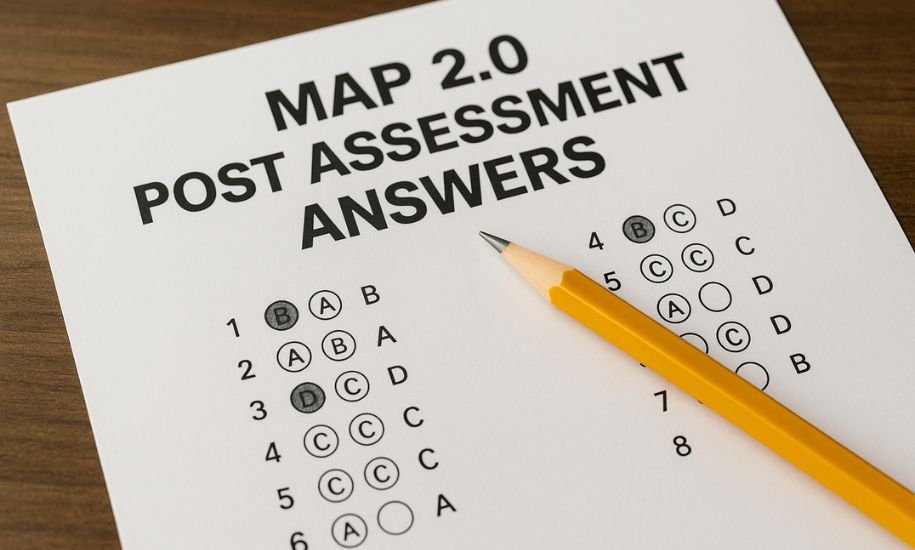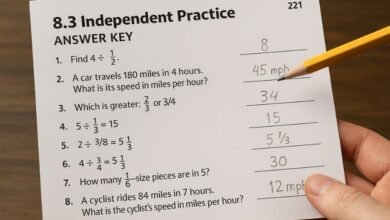MAP 2.0 Post Assessment Answers: What You Need to Know

When people talk about “MAP 2.0 post assessment answers,” it’s important to understand what the MAP assessment is, what “post assessment” means, and why students search for “answers.” Misunderstanding these ideas can lead students toward unhelpful or even risky behavior online.
What is MAP Growth?
MAP Growth is a computer-adaptive assessment system developed by the Northwest Evaluation Association (NWEA). It measures academic progress and achievement for K–12 students across core subjects such as reading, mathematics, language usage, and science.
The “computer-adaptive” design means that the difficulty of each question changes depending on how the student answers. If a student answers correctly, the next question becomes more challenging; if the student answers incorrectly, the next one is slightly easier. This allows the test to find a student’s true instructional level and provide teachers with detailed insight into strengths and areas for improvement.
Schools typically administer MAP Growth multiple times each academic year—often in fall, winter, and spring—to monitor growth rather than deliver a one-time evaluation. It’s not a “pass or fail” exam but a diagnostic tool that helps educators tailor instruction to each learner’s needs.
What Does “Post Assessment” Mean?
A “post assessment” is generally a test taken after a period of learning or instruction to measure how much knowledge or skill has been gained. In the context of MAP 2.0, it could refer to a new or updated version of the MAP Growth test taken after instruction to measure improvement.
The “2.0” label suggests a modernized or updated version of the MAP platform, potentially with improved item banks, test interfaces, and adaptive algorithms.
Why People Search for MAP 2.0 Post Assessment Answers
Despite the test’s purpose being growth measurement, online searches for terms like “MAP 2.0 post assessment answers Quizlet,” “MAP 2.0 post assessment answers Chegg,” or “MAP 2.0 post assessment answers PDF” have become increasingly common. These keywords reveal that students are looking for quick ways to access answer keys, test solutions, or downloadable materials that claim to contain the correct responses.
Common Motivations Behind These Searches
-
Performance Pressure: Students often face pressure from parents, teachers, or themselves to achieve high scores, which leads them to seek shortcuts.
-
Misunderstanding the Purpose: Many students see the MAP test as another “exam to pass” rather than a diagnostic measure of learning.
-
Peer Influence: Seeing classmates talk about or share answer files can normalize the idea of finding “cheat sheets.”
-
Confusion About Study Resources: Some students think using Quizlet or Chegg is just another study method, without realizing that posting or accessing exact test answers crosses into academic dishonesty.
The Role of Quizlet, Chegg, and PDFs
-
Quizlet is a digital flashcard platform designed for study aids. However, it sometimes contains unauthorized sets of test questions and answers uploaded by users.
-
Chegg is meant for textbook solutions and tutoring support, but it has faced criticism for being used to share or request exam solutions.
-
PDF repositories or file-sharing sites often circulate so-called “answer sheets,” though these are usually incomplete, outdated, or fake.
These platforms can be valuable for studying concepts, but using them to locate exact MAP test answers violates both academic ethics and test security rules.
The Reality of Answer-Seeking for MAP Growth
1. Adaptive Structure Makes Answer Keys Useless
MAP Growth’s adaptive design means no two students receive the same test. The system pulls from large item pools and adjusts questions dynamically. Therefore, even if someone found a list of “MAP 2.0 answers,” it would not align with their version of the assessment.
Each test session generates a unique set of questions tailored to the student’s performance, rendering generic answer keys meaningless.
2. Strict Test Security and Integrity
NWEA uses multiple layers of test security—item exposure controls, large question banks, secure browsers, and encrypted delivery systems—to ensure integrity. Any attempt to copy or share questions compromises the fairness and accuracy of results.
Districts that use MAP Growth also follow specific test administration policies to prevent leaks or breaches. Unauthorized sharing of questions or answers is considered a violation of educational ethics and could result in invalidated scores or disciplinary action.
3. Ethical Concerns and School Policies
Academic integrity is the foundation of trust in education. Using or distributing unauthorized assessment answers is considered cheating, regardless of intent. Schools and educators frequently remind students that looking for or using such materials can result in consequences ranging from retesting to academic penalties.
4. Misinformation and False Confidence
Even when answer sets are found online, they are rarely accurate or relevant. Because the MAP test evolves and updates regularly, most shared “answer keys” are obsolete. Students relying on them gain false confidence while missing out on genuine learning opportunities.
Why Focusing on Learning Yields Better Results
What MAP Growth Actually Measures
The MAP test doesn’t just test what a student knows—it measures what they’re ready to learn next. Teachers use the results to design personalized instruction and track growth over time. Each student’s progress is recorded through a unique RIT (Rasch Unit) score, which reflects academic skill levels rather than traditional grades.
The Growth Mindset Connection
Instead of obsessing over “right answers,” students benefit from embracing a growth mindset—the belief that ability improves through effort and practice. MAP Growth is designed to support that mindset by measuring improvement, not perfection.
Effective, Ethical Ways to Prepare
-
Build fundamental skills. Practice reading comprehension, grammar, math reasoning, and problem-solving.
-
Use legitimate study resources. Look for teacher-approved guides or official sample questions rather than unverified answer sets.
-
Review RIT goals. Understand what score ranges mean and set realistic improvement targets.
-
Ask for help early. If you find certain topics challenging, seek support from teachers or tutors instead of relying on shortcuts.
By focusing on comprehension and skill-building, students not only improve MAP results but also strengthen long-term academic performance.
How to Approach Online “Answer” Listings
Evaluate the Credibility
If you encounter websites or PDFs claiming to offer “MAP 2.0 post assessment answers,” approach with skepticism. Many of these resources are misleading or plagiarized. The same applies to flashcard sets or discussion threads that claim to contain “real test questions.”
Such listings often violate copyright and assessment security, and they rarely improve genuine understanding.
Understand the Legal and Ethical Boundaries
Uploading or downloading copyrighted assessment content is not only unethical but may also breach legal protections around intellectual property. Students and educators must recognize that while sharing general study notes is allowed, sharing test items is not.
Use Safer Alternatives
Instead of searching for unauthorized materials, try these approaches:
-
Explore district-approved practice tests.
-
Review learning objectives with teachers.
-
Join legitimate study groups focused on concept mastery.
-
Use tools like flashcards for definitions and formulas (not direct answers).
Common Misconceptions About MAP 2.0 Post Assessment Answers
“If I find a PDF with answers, I’ll score higher.”
Not true. The adaptive algorithm ensures that no two students get the same questions. Even if you had a complete answer sheet, it likely wouldn’t match your version of the test.
“Everyone does it—so it’s harmless.”
Sharing or using leaked test content can harm everyone involved. Schools rely on MAP Growth results for placement, resource allocation, and curriculum planning. If data is compromised, it affects teachers, administrators, and students alike.
“Using Quizlet or Chegg is just studying.”
These platforms can be excellent for reviewing concepts—but only when used properly. Uploading or downloading exact test questions and answers crosses into dishonesty. Understanding where the line lies is crucial.
Why Schools and Districts Rely on MAP Growth
Schools use MAP Growth to gain real-time insights into student progress. It helps teachers identify strengths, learning gaps, and instructional needs. Because it’s adaptive, the test captures a student’s individual learning trajectory far better than static paper exams.
For students, MAP Growth offers a chance to demonstrate learning, even if they’re not at grade level yet. Teachers can then use these insights to design targeted lessons, ensuring everyone moves forward from their current skill base.
The assessment’s purpose is to support learning growth, not penalize mistakes. When students treat it seriously—by engaging fully and giving honest effort—the resulting data helps educators make informed, supportive decisions.
Relying on answer sets, on the other hand, undermines that support system and shortchanges personal growth.
Responsible Use of Online Study Tools
The Right Way to Use Quizlet
Quizlet is meant for practicing vocabulary, reviewing terms, and reinforcing memory through repetition. Students can build their own flashcards for topics like math formulas or reading comprehension skills. However, uploading or sharing actual test questions from MAP Growth—or any exam—violates platform policies and educational integrity standards.
The Right Way to Use Chegg
Chegg provides textbook explanations, tutoring, and concept clarifications. It can be used ethically to understand challenging subjects, provided it’s not used to copy test answers or submit completed solutions during assessments.
The Right Way to Use PDFs and Notes
Downloading or creating PDFs for study summaries, practice questions, or personal notes is completely acceptable—as long as the materials are original or publicly shared by educators, not copied from secured tests.
By understanding the intended purpose of these tools, students can leverage them to genuinely improve performance without crossing ethical boundaries.
Moving from “Answers” to “Understanding”
Education works best when assessments measure real knowledge. Searching for “answers” undermines that process. Students, parents, and educators all share responsibility in reinforcing this message.
Instead of promoting the idea that success depends on having all the answers, schools should emphasize skill mastery, growth, and curiosity. Students should view MAP 2.0 post assessments as chances to showcase what they’ve learned—not as obstacles to cheat around.
Final Thoughts
The growing trend of searching for “MAP 2.0 post assessment answers Quizlet, Chegg, or PDF” reflects a larger issue: many students equate success with shortcuts. But in reality, adaptive tests like MAP Growth make answer-hunting ineffective and counterproductive.
MAP 2.0’s purpose is not to rank students but to guide their learning. By focusing on growth, understanding, and honest effort, students benefit more than any answer key could ever offer.
In a world where technology makes information instantly accessible, the real skill lies not in copying answers but in building the ability to think, reason, and solve problems independently. That’s what the MAP test aims to nurture.
Thank you for reading this in-depth article on MAP 2.0 Post Assessment Answers. For more educational insights, guidance, and thoughtful discussions on learning in the digital age, visit American Times.
